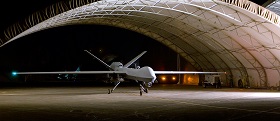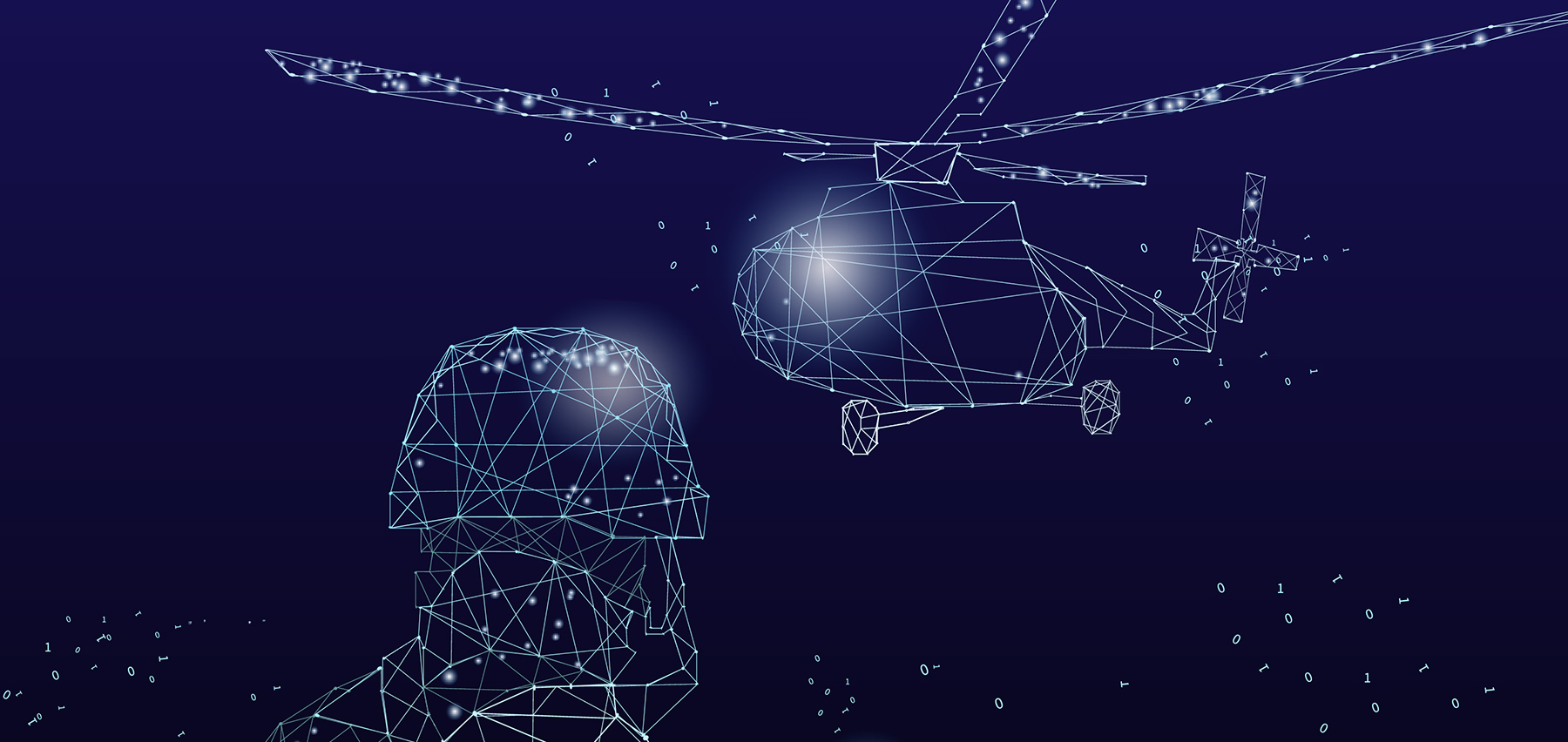Ardian is a counter-terrorism researcher, lecturer and security analyst, with a field research experience in Syria, Iraq, Jordan, Western Europe, the Balkans, Kenya, Somalia and Central Asia. Ardian is the co-founder and director of the American Counterterrorism Targeting and Resilience Institute (ACTRI), a U.S.-based research institute focused on studying translation left-wing, right-wing, and militant jihadi forms of political violence. He holds a Ph.D. in Public Policy and Administration.
Interviewed by Tatyana Kanunnikova.
What will be the role of drones in future terrorist attacks?
If we look at some of the most recent examples in Europe—for instance, the Gatwick Airport incident where drone sightings were reported—these led to a lot of confusion among airport officials as well as policymakers and law enforcement. In this specific case, we are talking about dozens of flights canceled, millions in costs for the airport as a result of the shutdown. We are also talking about the anti-drone technology that needs to be implemented by the airport, which translates into substantial financial costs. If we look at other places, such as active conflict areas, we’ll see that Houthi rebels used drones to target and assassinate Yemeni leaders and they were also striking key national infrastructure in places like Saudi Arabia. Even here, in the United States, sightings and illegal actions of drones flying over cities and close to government facilities in some cases speak to the fact that drone operations may be a thing in the future.
Here, in the United States, there are examples of individuals who have attempted or actively pursued ways to utilize remotely piloted aircraft or drone technology in general to cause harm to U.S. interests. For example, in 2012, a group of Virginia-based individuals, with direct or indirect affiliation with Lashkar-e-Taiba, a Pakistan-based terrorist organization, sought to acquire this sort of technology for the terrorist group. In 2011, we had a U.S. national, who actually was a student at one of the reputable universities here in the United States and who plotted to pilot explosive-laden, remotely controlled planes and attack U.S. government facilities and military installations. If we look at the issue from this particular standpoint, there is potential for malicious use of drones in not only active conflict zones but also here in the West, which should not be overlooked.
In 2017, FBI Director Christopher Wray said that drones constituted an imminent terrorist threat to U.S. cities. Is this threat still considered imminent?
That is a good question and that has been part of the discourse here in the United States as well. The concern is that they come with a very low acquisition cost, which presents an opportunity to pursue that kind of technology to many groups, state and non-state actors, including private individuals. One can easily procure parts to build it. It does not require sophistication in terms of running the aircraft as well.
These are all areas of concern for officials and law enforcement, especially here in the West. While I would caution against labelling drone usage for malicious or harmful purposes as the most pressing threat in the West, one should still not discount the fact that local law enforcement and other entities may not be best positioned to counter the drone threat. They are not necessarily best equipped and staffed to adequately address such a threat. I would say it is one thing to confront or operate against drone threats in active conflict zones, where the military has the resources and the capability to address that kind of threat. Domestically, in the West in general, that could be an issue given that we arguably lack the sort of sophistication needed to detect, monitor, and counter drone threat at the local level, in our cities.
Are modern terror groups capable of modifying consumer drones to conduct improvised attacks?
Terrorist groups, especially those of the modern day, have been very capable of doing that. I have witnessed first-hand such cases during our research in Syria and Iraq. I’ve seen a number of modified consumer drones used by ISIS to target the Peshmerga in the North of Iraq, Iraqi security forces in Mosul and other places. From a structural standpoint, [ISIS] were known for their Phantom DJI models. They often utilized Styrofoam, a light, easily accessible, cheap material to build drones, as well as to modify and turn other drones into actual weapons. In many cases, we saw that they were able to mount certain amounts of IEDs or other explosive devices.
There was, of course, the ability to pursue that kind of technology given a low acquisition cost. One thing that we also see is the mimicry in the use of drone technology. For example, the drone technology that has been used by ISIS is being mimicked by ISIS affiliates in other parts of the world as well because, again, of the low acquisition costs and the ease with which it can be built.
What tactics and techniques do drone-using terrorist groups use?
From my personal research experience as well as experience in places like Syria and Iraq, the drone technology was primarily used to gain intelligence, for surveillance purposes. Drone usage has also proven powerful for propaganda purposes, namely imagery that was captured through drones and exploited for propaganda purposes. Of course, one must not overlook the military-strategic component, such as the ability to mount explosive devices and drop them onto enemies. It also serves to demonstrate “aerial power,” which comes, again, with a huge propaganda value that VE and terrorist groups have been able to put to use as well.
Another thing that we see, which is very interesting, is that the drone usage, especially as far as ISIS is concerned, has given them this opportunity to claim the alleged power and control not only on the ground but also in the airspace. This gives the illusion as though—especially as it [ISIS] started losing its controlled area in 2016-2017 and onwards—the drone operations afforded the group with this sort of aerial superiority, the operational capacity to penetrate into the airspace and attack enemy forces. This did give them [ISIS], from a propaganda perspective, a huge boost as well. And we have seen, for example, that ISIS would launch their drones laden with explosives into enemy lines, accompanied by other drones equipped to record such attacks, which was then shared via Telegram or other social media platforms utilized by ISIS for their propaganda purposes. As for the success of their drone-led attacks, it is really debatable; firstly, because they [ISIS] are only going to advertise their successes. We actually do not know much—at least publicly—about their downfalls or any limitations. Some of the images, if we look at some past attacks, in 2017, for example, when ISIS dropped several IEDs via drones onto the Syrian army base storing significant stashes of weapons in a stadium, showed significant damages to the Syrian military. But we do not know with certainty about their successes, the level of their success, as we often see what they choose to share on their media.
What we do know is that it is important for us to differentiate between terrorist groups or non-state actors that have utilized drones in a limited capacity and those that have active drone programs. If we look at organizations like Hezbollah (Kataib Hezbollah), Hamas, ISIS or even Houthis, they do have a record of successfully running drone programs, weaponized drone programs. In fact, these programs are sponsored by a state. For example, we know that Iran has played a significant role in sponsoring Hamas and Hezbollah’s use of drones, and so on. Again, when trying to differentiate where the drone threat might come from, it is important to understand the difference between the usage of drones by certain groups or entities in limited capacity versus those who have been running or supporting drone programs.
Are drones more likely to be used as means of transportation or as autonomous weapons?
In many cases, aside from the primary surveillance function, they have been utilized by terrorist groups as a means of transporting explosive and other materials from point A to point B. But as for the use of autonomous weapons, to my knowledge to date, to be able to drive this sort of autonomous drone weapons, they lack such a capability given that such drone technology needs to be accompanied with artificial intelligence. Most of these [drones] are programmed to, say, carry out attacks, drop a bomb, and so on. There has to be artificial intelligence incorporated with these autonomous weapons for them to be effective in other ways. But I have not seen this sort of technology, especially with ISIS. Perhaps, this could be the case with other groups like Hamas and Hezbollah.
What targets would terrorists prioritize when conducting drone attacks?
As for the targets, what we have seen in places like Iraq and Syria, much of the drone strikes targeted, of course, the military, those perceived as enemy. As I mentioned earlier, in 2017, there was a highly publicized attack where ISIS dropped a significant number of explosives onto the Syrian army positions and weapons supply points. Attacks were also carried out against the Iraqi security forces during operations in Mosul. Surveillance function is an important component because it affords this sort of “pre-attack” planning ability to ISIS and other terrorist groups to better organize and coordinate their attacks. They would normally send out drones to collect information and then follow up with an attack, as is often the case. What we have seen is not only the use of drones for attack purposes but also the demonstration of power by sending many drones at the same time to create an illusion or perception that ISIS is capable of attacking with multiple drones and penetrating the enemy’s aerial space.
There is a nightmare scenario that small drones can be used to deliver chemical or biological agents in an attack. Or disperse deadly viruses over a public gathering place. Is it real?
In Iraq or Syria, where ISIS or other operating terrorist groups are involved, it is a matter of being able to gain access to chemical or biological weapons. It is not a far-fetched notion. And there are some examples of such incidents taking place. There were some efforts on the part of ISIS to deliver chemical, biological and other weapons of mass destruction via drones.
Are drone strikes effective against terrorist groups like al-Qaeda and ISIS? If yes, why?
As regards counterterrorism, if we ask government officials, they would argue that they are effective. The way to measure such effectiveness would be to look at how certain terrorist leaders—or those associated with terrorist actions at some level—have been targeted. Most recently, Qasim al-Raymi from al Qaeda in Yemen was killed via drones, so that was one measure of success. During the Obama administration, in Yemen alone, we had upwards of 1200 drone attacks targeting different militants. During President Trump, we delivered hundreds of attacks, specifically targeting militants in Yemen, Somalia and other places. In Pakistan alone, the drone targeting campaign lasted over 10 years. We also have the recent example where the Iranian General Qasem Soleimani was targeted and killed via a drone strike.
But again, if we look at terrorist organizations as unified and cohesive organizations, then we could say that killing their leaders specifically should reduce terrorist attacks as well. But we also know that terrorist organizations are not cohesive or unified in many ways. In that regard, the effects of killing a terrorist leader become perplexing or complex. For example, when a terrorist leader is killed, in theory, it should lead to a situation where a terrorist group’s leadership and control is undermined. On the other hand, depending on who comes next in the line of succession, the successor may be more prone to violence.
It is a really complicated question. In retaliation, groups may also increase terrorist attacks against civilians. And we have also seen this in terrorist groups with centralized leadership. One must also consider drone attacks leading to civilian casualties and significant grievances. I conducted research with my colleagues in Somalia last year. And during the course of interviews, drone attacks were largely criticized and raised as the source of grievance by some, even leading to recruitment and joining Al Shabaab in some cases. Although those attacks were aimed at Al Shabaab leaders or affiliates, or ISIS operatives, grievances were raised that they did lead to civilian casualties as well.
What are the risks associated with drone operations? Are there ways to mitigate those risks? How do we prevent them?
Some drones can fly at a very high altitude, while some fly only at low altitudes, which can be problematic under either scenario. From an anti-drone technology standpoint, that becomes a problematic proposition and requires a better understanding of how drone technology may be applied in the future. But again, as I mentioned earlier in the example of drone sightings at the Gatwick airport, when it led to significant confusion and material damage, the same thing applies here [in the West] in local contexts because of the inability to fully grasp and understand this emerging technology, but we’re also talking about the need to counter that technology if deployed in cities or in other places where it could pose significant difficulties and strains, especially on local governments and law enforcement.
Last year, for the first time in history, drones autonomously attacked humans. According to the UN report, these drones were supplied by Turkey to the Libyan forces. Can machines be allowed to make their own decisions to kill or should autonomous drone attacks be banned?
I have not done much research on the topic, and I do not know if these autonomous attacks led to human casualties. If this is the case, that would change the course of how we understand autonomously driven objects, specifically as it relates to drones. As stated earlier, autonomous weapons, coupled with this sort of artificial intelligence, do make sense in some way, provided that humans exercise some level of control. We have to understand the decision-making process that goes into creating this sort of autonomous technology [drones].
We know from our research that we could feed a certain image to a drone, which would enable that particular drone to carry out an attack based on the image fed. Having said that, a slight change, modification, misreading of that image (or its pixels) by the drone could lead to significant errors in terms of targeting capabilities. The lack of human control may always pose a level of risk. Humans need to play a role in a drone’s “decision-making” process. If we look at other fields that utilize these autonomous technologies, like self-driving, autonomous vehicles (AV), one can find errors there as well. From such a perspective, that could be problematic as well. Also, the question is not only how they [autonomous drones] are used but also where and how many of them are used. If we are talking about an autonomous drone being utilized in certain operations, say in a conflict zone like Syria and against ISIS, it may lead to different outcomes as compared to, say, using them in non-conflict areas, in cities and where large segments of civilian population are present. The room for error is especially there in the case of the latter, when operating in spaces where civilians are present. Again, we do not know much [publicly] about this emerging technology, including their decision-making process, their objectives, how they operate in different geographic areas, etc. These are all questions we need to better understand and address.








